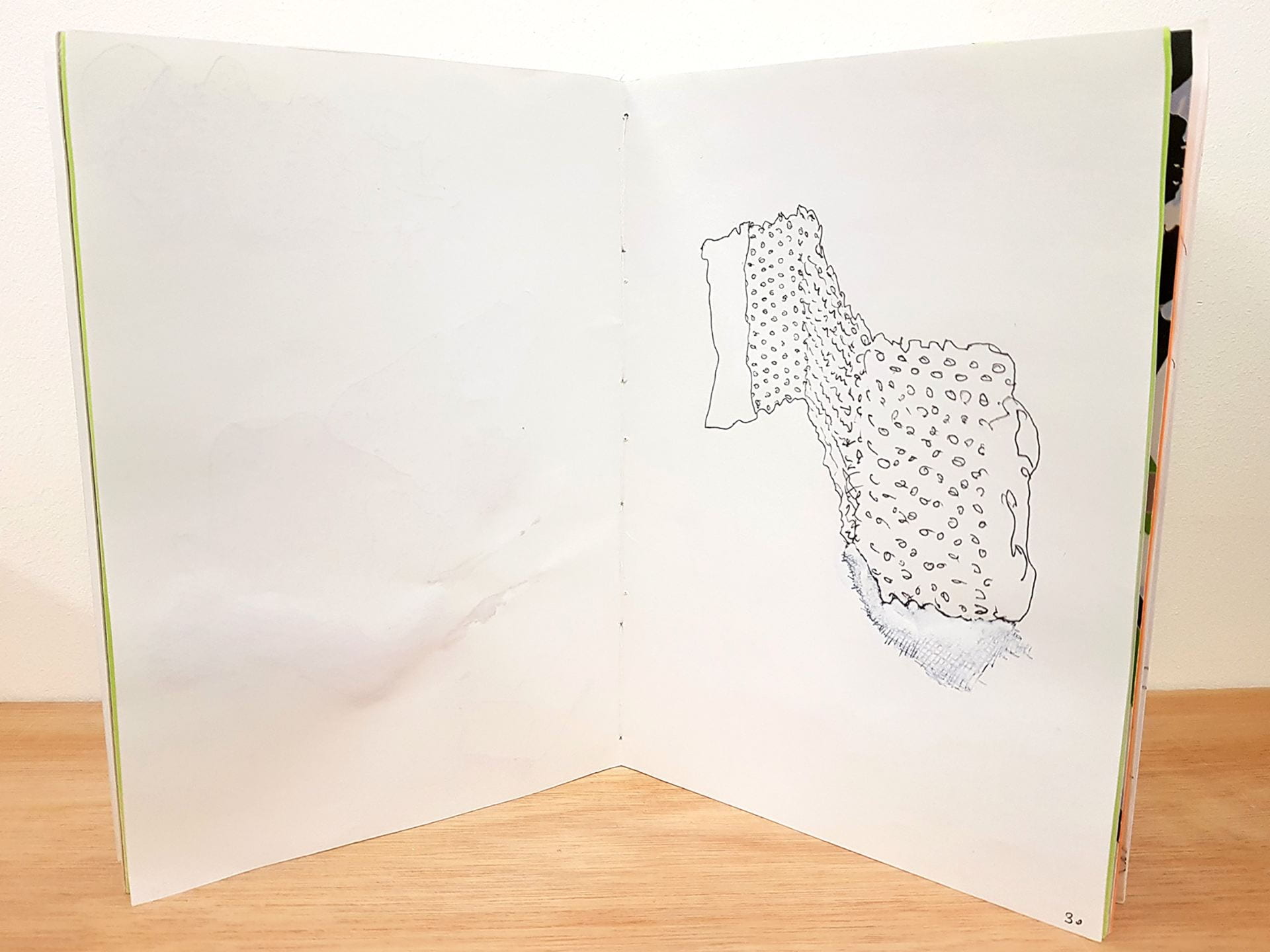Elke Finkenauer is a visual artist based between Auckland and Glasgow. She was the first artist to create a work for our proposal space, The Booth.
Can you tell us a little bit about your work that has been in Gus Fisher Gallery’s exhibition programme?
I made a work called ‘Members Club’ for The Booth. It was shown as part of We’re Not Too Big to Care – the re-opening show of Gus Fisher in 2019. The work was a silver, punched button upholstered surface that covered the back inner wall of The Booth. It looked a bit like a secret doorway, and was about processes and forms of exclusivity and exclusion.
I was also part of a collaborative exhibition ‘Something to Remember’, with Alexis Neal at Gus Fisher in 2018. This exhibition developed in response to a rare artist book by Louise Bourgeois called ‘Nothing to Remember’, which I’d borrowed from the Elam library whilst studying there. My works for this exhibition included printmaking, soft sculpture and a textile book.
Elke Finkenauer, Members Club, 2019.
Elke Finkenauer and Alexis Neal, Something to Remember (installation view), 2018.
What have you been working on since then?
Since ‘Members’ Club’ I’ve worked on a few different things:
- A series of tiny screenprints which are retrospective visual ripostes to “just jokes”. These works are based on images taken from media coverage referring to the bodies of female leaders, politicians, and artists (for example a hair-do or a leg). They form part of a series titled ‘Knock Knock’.
- A series of micro-narratives titled ‘People like you and me’, a selection of which were included in the publication ‘Quality Sleep, Harmony Life!’, distributed at Edinburgh Art Festival 2019.
- Since late 2019 I’ve been working on the first phase of a project which I think will take at least a year and a half to complete (which probably means it will take 3 years). I am in the process of drawing each thing in my studio, one-by-one, in sketchbooks made from all of the scraps of paper, old magazines and unwanted books in my studio (pictured below). There are a few ‘rules’ – no do-overs (all mistakes must be in some way visible), nothing can be discarded, and no new purchases. Alongside this I am writing a description and making a colour chart of each thing. So far, I’ve drawn, described, and made a colour chart of 703 things, and estimate I have about 3,000 things in total. After I’ve drawn and documented each thing, I will create a database, then devise an arbitrary (but necessarily elaborate) system to allocate the things in the database (including the descriptions and colour charts) into groups from which I will make sculptures. This project has been inspired by Georges Perec’s creative process, his descriptions of interior spaces, and his approaches to things and data.



How have you been affected by Covid-19 professionally?
I flew from New Zealand to Glasgow two weeks before the lockdown. My studio is closed and I have paused making new work. For me this is time to take stock, reflect, and think about change. In relation to my practice this means documenting, reading, writing, and contemplating. I am fortunate to have part-time paid work which I am able to do from home to sustain me through the lockdown.
What are you doing to entertain/occupy yourself in self-isolation?
In Scotland the lockdown began a couple of days before New Zealand, and is expected to continue at least until mid-May. During this time in self-isolation I have been sewing, baking, reading, cooking, doing yoga, growing plants, tidying, cleaning, fixing shelves, lifting the floorboards to re-fix them down so they stop creaking, talking to friends, going for walks, reading the news, worrying, being sad, being angry at the UK government’s hugely inadequate response to Covid-19, and being thankful for the New Zealand and Scottish responses which show what can be achieved by smart, pro-active, compassionate leaders.
What are you reading right now?
I’ve been doing a lot of reading lately. Right now, I’m reading Alasdair Gray’s Lanark, a novel written over a 30-year period, which combines realist and dystopian surrealist depictions of Glasgow. I’ve just finished reading Dorothea Tanning’s Between Lives: An Artist and Her World, and before that Michael King’s History of New Zealand. I thoroughly recommend all of these books.
Is there another artist you would like to put the “spotlight” on, that people should know about?
Yes! People should know about Kim Annan. http://kimcam.net/


